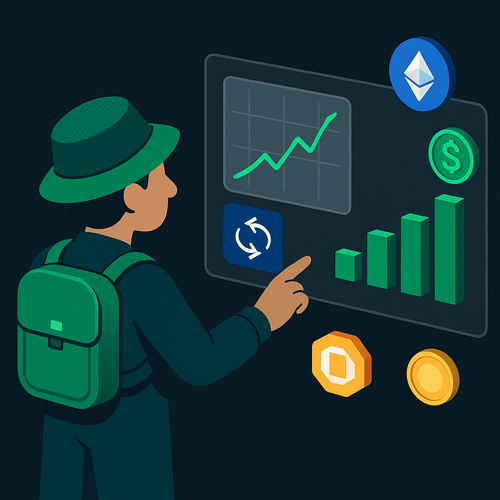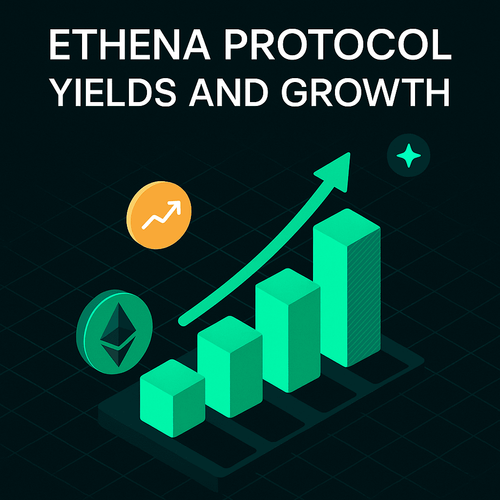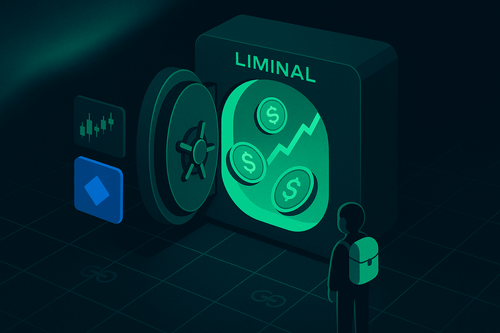Introduction
Spark is a decentralised non-custodial liquidity market protocol where users can participate as suppliers or borrowers. Suppliers provide liquidity to the market to earn a passive income, while borrowers are able to borrow in an over-collateralized (normal loan) or under-collateralized (flash-loan) fashion.
Spark Protocol is a fork of the Aave v3 lending protocol that launched with MakerDAO’s blessing in May. The DAI-focused money market also creates new use cases and yield opportunities for DAI holders, allowing depositors to access the DSR and take loans against DAI collateral. Spark is incubated by MakerDAO and will become its own subdao in the future, with a separate and unlaunched token that you can airdrop-farm.
Recently, Spark has also been attracting attention because users can participate in DAI savings rate through their UI, which was temporarily increased to 8% in early August, following a MakerDAO governance proposal. This was done to increase demand for the stable coin which had been on a steady decline in the recent months. If users choose Spark to farm the DSR, wallets would receive sDAI, a tokenized, transferable representation of their DAI deposits.
The temporary 8% yield from the DSR was sustainable for the protocol and paid out directly in DAI, coming from one of the most established protocols in all of DeFi, prompting many investors to seize the opportunity.
Fast forward to today, the DSR was lowered to 5%, and early depositors are seen rotating their capital to new fresh opportunities". This report investigates some of the largest depositors into the DSR from early August and looks into what they are doing now with their stables.
How Much Was Redeemed After DSR Decreased?
As mentioned above, the DSR has been lowered from 8% to 5%, which led to many large depositors withdrawing their capital.
Looking into all the 1,623 addresses that deposited into sDAI since 04. August 2023, there are 1,141 addresses that kept most, if not all, of their deposits in sDAI until 31. August 2023 (withdrew only 0-20%). However, 387 addresses (~23%) withdrew almost everything. Interestingly, there is not much in-between, meaning the vast majority of depositors either stayed in sDAI or almost completely exited. Those short-term depositors are most likely mercenary capital, always looking for the most lucrative place to deploy their capital.
On the other hand, looking at how much has been deposited and how much has been withdrawn, over one-third (34.2%) of DAI deposited since 04. August was already withdrawn.
The percentage of funds (in USD) withdrawn was higher than the percentage of wallets withdrawn, which means that the wallets that did redemptions were, on average, the larger depositors.
At first glance, the withdrawals seem like a lot, but retaining almost two-thirds of the inflow and even more of the depositors initially attracted to incentives is quite impressive for a large DeFi pool.
Irrespective of whether they redeemed or remained in the pool, all of these depositors definitely had good insight into the crypto market to enter at that time. The following sections of the report will focus on why remainers remained and what mercenary capital did with the redeemed funds.
Aggregated Metrics For Remainers and Redeemers
The report looks at two different things, what addresses that did not redeem the majority of their sDAI (<50%) did with said sDAI, and what addresses that redeemed most sDAI (>50%) did with the DAI they received.
Remainers
Of those remaining in sDAI, several addresses used sDAI to earn further yield.
The most used sources for additional yield were:
- Spark: With spsDAI being sDAI re-supplied to Spark. Although this does not give any additional incentives, you can borrow an asset like ETH against this collateral and earn yield on that to further boost your APR above the 5% DSR.
Pendle: The platform where you can trade yield itself, offers options for the principle and yield-bearing part of sDAI. These can then even be re-staked at other, more niche protocols. This wallet for example re-staked the principle token in Equilibria for an additional 10% APR.
Aave: Similar to Spark, sDAI is eligible as collateral on Aave, and although not earning deposit-APR can be used to borrow other assets which can earn additional yield.
Redeemers
Wallets that redeemed their DAI actually mostly exited their DAI position completely through various DEXs or sent DAI to other wallets.
A Deep Dive Into The Largest Depositors
The largest depositors can all be categorized as professional farmers, each having considerable capital to deploy into a single protocol. As most of them withdrew at least a portion of their initial deposits, they seem to be actively managing their portfolio and reallocating (semi-)frequently to manage their risk as well as returns.
Digging through the top 20 addresses individually revealed that most were quite large wallets (8-9 figure on-chain networths), largely positioned in stables and ETH on various chains. The top places where their assets are placed are:
The large DeFi 1.0 Protocols Maker (incl. Spark), Aave, Compound: Although many redeemed their DAI, the top addresses still keep a significant amount of their stables in sDAI. This is of course partly attributed to the bias, that the report is only looking at addresses that interacted with sDAI in the first place. Furthermore, many of these large addresses supply stETH to these protocols to earn extra yield, and interestingly, many borrow stables against their stETH, which could either indicate a directional long position, or maybe these stables went into farms (like the DSR) to increase the yield on their stETH.
Morpho: Morpho Aave is another recurring protocol from the top 20 addresses. It is a peer-to-peer layer built on top of lending pools such as Compound and Aave and offers its own token rewards on top of the usual supply and borrow-APY. However, as of now, the MORPHO tokens remain non-transferable.
Aerodrome: Just launched on Base and is very similar to Velodrome. Just after launch, the APRs are extremely lucrative.
Lybra: Lybra’s eUSD stablecoin offers 8% yield, and is mintable by supplying ETH or stETH. Some large addresses that redeemed sDAI after the DSR decreased from 8% went after the 8% of eUSD instead.
Conclusion
Ultimately, the DSR increase to 8% partially paid off, and drew a lot of attention and capital to Spark and sDAI in particular. Although there have been withdrawals after the decrease to 5%, a lot of the capital remains locked in the DAI savings module.
By looking at the top sDAI addresses and what they are doing with their sDAI, as well as their other farms and assets, good opportunities can surface, supporting on-chain traces as a source for alpha.
The large sDAI farmers seem to prefer established and relatively “safe” protocols from DeFi 1.0 for the majority of their stable and ETH portfolio, which makes sense from a risk perspective. However, among those large farmers, there are also more degen wallets going heavy into newer protocols like Aerodome on Base.




